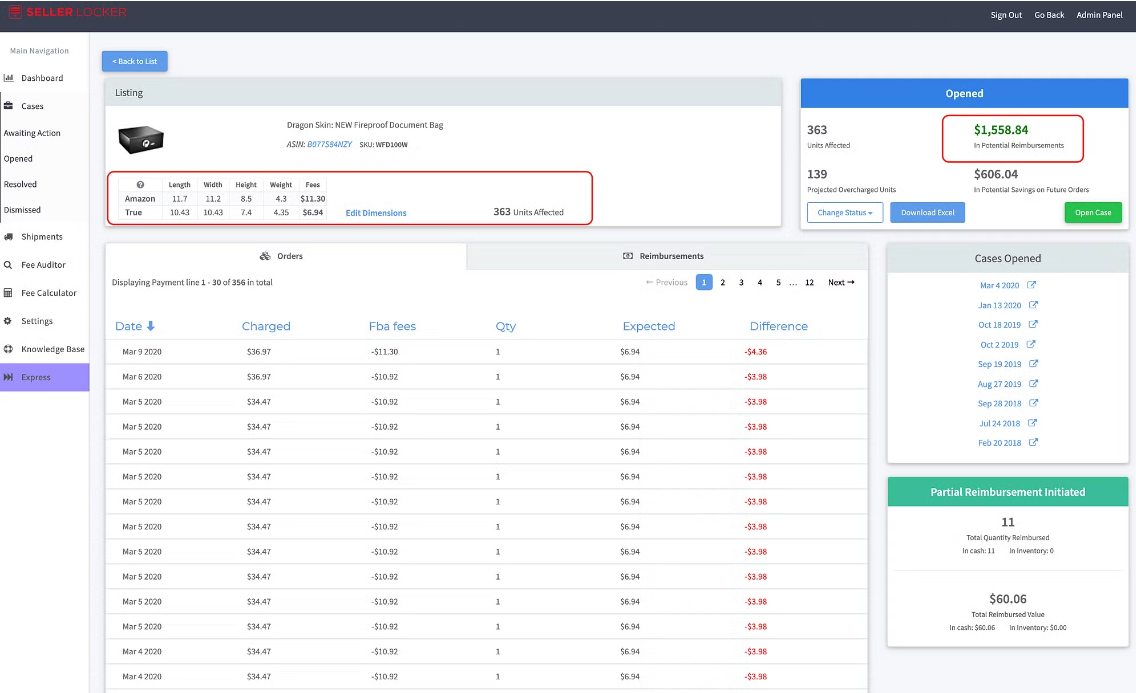Selling on Amazon provides businesses with a vast marketplace to reach global customers and drive revenue. However, managing inventory, fulfillment, and financial transactions on Amazon’s platform can lead to errors that impact profitability. Conducting regular Amazon reimbursement audits is essential for sellers to identify and recover funds owed by Amazon due to discrepancies or errors. In this comprehensive guide, we explore the top tools and strategies for conducting an effective amazon reimbursement audit, ensuring accurate financial transactions, maximizing reimbursement opportunities, and enhancing overall operational efficiency.
Understanding Amazon Reimbursement Audits
What is an Amazon Reimbursement Audit?
An Amazon reimbursement audit involves a systematic review and analysis of seller accounts to identify instances where Amazon may owe funds to the seller. These funds typically arise from errors or discrepancies such as lost or damaged inventory, overcharged fees, or incorrect customer returns. By conducting audits regularly, sellers aim to recover funds rightfully owed to them, thereby optimizing profitability and financial stability on Amazon’s platform.
Importance of Conducting an Effective Audit
Maximizing Financial Recovery
The primary goal of an Amazon reimbursement audit is to maximize financial recovery for sellers. By identifying and rectifying errors in Amazon’s fulfillment processes, such as discrepancies in inventory management or fee calculations, sellers can recover funds owed to them, ensuring accurate financial transactions and enhancing profitability.
Ensuring Compliance and Accuracy
Regular audits help ensure compliance with Amazon’s policies and guidelines regarding reimbursement claims. By accurately documenting errors and discrepancies, sellers can submit valid claims to Amazon, reducing the risk of financial inaccuracies and maintaining transparency in financial transactions.
Identifying Operational Inefficiencies
Audits also help identify operational inefficiencies within Amazon’s fulfillment processes. By pinpointing recurring errors or patterns, sellers can implement corrective measures to streamline operations, improve inventory management, and enhance overall efficiency in fulfillment and customer service.
Mitigating Financial Risks
Proactively identifying and addressing potential financial discrepancies through audits helps sellers mitigate financial risks associated with errors in Amazon’s fulfillment processes. This proactive approach safeguards sellers’ financial interests, enhances risk management strategies, and promotes financial stability in e-commerce operations.
Top Tools for Conducting an Amazon Reimbursement Audit
SellerBench
SellerBench offers automated audit tools designed to analyze transaction data, detect errors in inventory management, and identify potential reimbursement opportunities. Their services include inventory reconciliation, fee auditing, and proactive monitoring of reimbursement claims.
AMZRefund
AMZRefund provides automated reimbursement services that detect and submit claims for lost or damaged inventory, overcharged fees, and unprocessed returns. They offer transparent pricing models, real-time reporting, and dedicated customer support to optimize reimbursement processes for Amazon sellers.
Refunds Manager
Refunds Manager offers a comprehensive suite of reimbursement services, including automated claim detection, submission, and tracking. They specialize in maximizing financial recoveries for Amazon sellers through rigorous auditing, data analysis, and proactive management of reimbursement claims.
Seller Investigators
Seller Investigators employs experienced professionals to audit Amazon seller accounts, identify discrepancies, and recover funds through comprehensive reimbursement services. They provide personalized support, detailed reporting, and strategic insights to enhance financial recovery and operational efficiency.
Strategies for Conducting an Effective Amazon Reimbursement Audit
Establish Clear Audit Objectives and Scope
Before conducting an audit, define clear objectives and scope based on your business needs and priorities. Determine which areas of Amazon’s fulfillment processes you will audit (e.g., inventory management, fee calculations) and establish specific goals for financial recovery and operational improvement.
Utilize Automated Audit Tools
Leverage advanced audit tools or software designed specifically for Amazon sellers to streamline the audit process. These tools automate data analysis, detect discrepancies, and generate detailed reports to facilitate efficient identification of reimbursement opportunities.
Audit Inventory and Transaction Records
Meticulously audit inventory and transaction records to reconcile discrepancies such as lost or damaged inventory, overcharged fees, or unprocessed returns. Compare inventory logs with Amazon’s records to verify accuracy and identify instances where Amazon may owe reimbursement.
Submit Detailed Reimbursement Claims
Prepare and submit detailed reimbursement claims to Amazon through Seller Central or designated channels. Include comprehensive documentation, evidence, and supporting materials to substantiate your claims and increase the likelihood of claim approval and timely reimbursement.
Monitor Claim Status and Follow Up
Regularly monitor the status of reimbursement claims submitted to Amazon. Follow up promptly on pending claims, address any inquiries or additional information requests from Amazon, and ensure timely resolution to maximize financial recovery.
Implementing an Effective Amazon Reimbursement Audit Strategy
Schedule Regular Audits
Establish a regular schedule for conducting Amazon reimbursement audits, such as quarterly or bi-annually, to ensure timely identification of errors and discrepancies. Implementing a consistent audit strategy helps maintain financial accuracy, optimize reimbursement opportunities, and mitigate risks associated with Amazon’s fulfillment processes.
Utilize Data-Driven Insights
Utilize data-driven insights obtained from audits to inform strategic decision-making and operational improvements. Identify trends, patterns, and areas for optimization within Amazon’s fulfillment processes to enhance efficiency, reduce costs, and capitalize on growth opportunities.
Collaborate with Audit Experts
Consider collaborating with audit experts or consultants specializing in Amazon reimbursement audits. These professionals offer expertise, industry knowledge, and strategic guidance to maximize financial recovery, ensure compliance with Amazon’s policies, and optimize operational efficiency for sellers on Amazon’s platform.
Conclusion
Conducting an effective amazon reimbursement audit is crucial for sellers to maximize financial recovery, ensure accuracy in financial transactions, and optimize operational efficiency on Amazon’s platform. By leveraging top tools and implementing strategic audit strategies outlined in this guide, sellers can proactively identify and rectify errors or discrepancies, thereby enhancing profitability and financial stability. Implement a robust audit strategy, utilize advanced tools, and collaborate with audit experts to establish a successful reimbursement audit process that supports long-term growth and success in e-commerce operations on Amazon.





